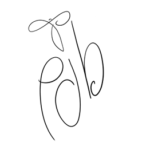 |
| Back view of a Wood Stork tending eggs in its nest. |
I treated myself and spent the good part of last Saturday at the rookery on Spring Island. I arrived at 11 a.m. and didn’t leave until 4 p.m.!
I toted my birding scope and camp stool to a wonderfully shady spot and set up my portable studio.
The scope is pointed at Wood Storks that are on the ground. You can see the rookery area in the upper left of the image. Those tiny white specs are storks.
 |
| click to enlarge |
When I first arrived I made quick sketches of several different rookery birds in my 8.5 x 11 Stillman & Birn Alpha Series Journal. The Anhinga was sketched using the ‘snap shot’ method and I used the blind contour technique for the White Ibis and the juvi Wood Stork. It was quite warm and most of the birds either had their mouths open, or wings held high and wide to cool off.
 |
| click to enlarge |
I noticed an adult Wood Stork near the top of the rookery tending eggs in its nest, its back to me. He/she would carefully nudge and rotate the eggs. I started the above sketch using blind contour, then finished up with my favorite modified contour (you get to peek and adjust). I so love having a birding scope. Upon close study of this Stork, I noted the black of its wings had a wonderful dark green color mixed in with the black. I loaded the waterbrush with Holbein Royal Blue and laid it in the darkest areas of the wings, then added hookers green and burnt sienna to mix and mingle with the blue. I love mixing colors directly on the Alpha paper.
In between sketching and painting I did a lot of observing. I even attempted digi-scoping with my iPhone and am quite pleased with the results! There is enough detail for me to use these photos to sketch from – please feel free to do the same!
 |
| click to enlarge |
 |
| click to enlarge |
The storks are so odd looking that they are cute! Their feathers look down like at this stage of life. Love their white legs, too 🙂 Note the closeness of the nests. And, all the while the juvi’s are callling… “Wha, Wha, Wha!”
 |
| A lot of the adults kept their wings up and open like this to shield their chicks and eggs from the sun. You can see a bit of this adult’s wing in teh previous photo. |
The male Anhinga’s breeding plumage is stunning. What really caught my eye were the wispy golden feathers that were on its head and neck. Of course when I settled in to sketch this beauty, he felt the need to go hunting for his charges… I wasn’t able to get a proper look at his wing patterning or his feet, so I went from memory… don’t look real close 🙂
The Anhinga and Great Egrets all had their mouths open and their cheeks were fluttering. I learned later that the part of their head/cheek area is call a gular and what they were doing to keep cool is gular fluttering. Love learning new things!



